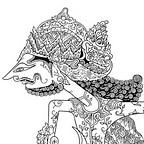The Bialystoker Synagogue
A Photo-Essay on Dual Locality in the Jewish Diaspora
The Bialystoker Synagogue draws its name from the particular communal origin of its founding Congregations, which consisted of Jewish immigrants from Białystok. At the turn of the 20th Century, Białystok (“white slope”) was in Imperial-Russian Poland, then part of the Pale of Settlement, and today is in the Republic of Poland. The Synagogue’s edifice is one of only four extant fieldstone buildings in Lower Manhattan from the early 19th Century and is the oldest building used as a synagogue in New York City.
Designed in late Federal style, the edifice was built in 1826 and initially served as the Willett Street Methodist Episcopal Church. The larger site had been the former estate of James de Lancey, who had his property confiscated after the American Revolution as he was a Loyalist of the British Crown. By the 1880s, the Church’s congregation was in decline due to demographic shifts on the Lower East Side. Ashkenazi Jewish migrations from Białystok and other areas of the Pale began in the second half of the 19th Century due to anti-Semitic pogroms, which only grew more severe into the early 20th Century.
The Bialystoker Synagogue was formed from two earlier Bialystoker Congregations: Chevrah Anshei Chesed of Bialystok, founded in 1865, and Adas Yeshurun, founded in 1893. In 1905, Chevrah Anshei Chesed purchased the edifice from the Church to accommodate communal growth and merged with Adas Yeshurun to form Beth Haknesses Anshei Bialystok. This proved timely in light of the Białystok Pogrom of 1906 that brought a large influx of new Bialystokers into New York City. The conversion of churches into synagogues was explicitly addressed early on by Rabbinic authorities in Poland, who first gave Halakhic approval regarding the purchase of the Norfolk Street Baptist Church by Beth Hamedrash Hagodol in 1885.
The first accounts of Jewish settlement in Białystok date back to the mid-17th Century and the city featured a Jewish-majority population by the late-19th Century. The demographic balance between Jews and ethnic Poles in Białystok roughly equalized following the collapse of Imperial Russia and the formation of the interwar Second Polish Republic (1918–39). As was true for all European Jewry, World War II and the Holocaust (HaShoah) were devastating turning points for the Jews of Białystok.
Following the joint invasion of Poland by Nazi Germany and the Soviet Union in 1939, Białystok came under Soviet occupation, which brought its own severe restrictions and deportations upon the Jewish population. The launch of Operation Barbarossa on June 21, 1941 soon brought Białystok under German occupation. On June 27, German forces locked around 2000 Jewish men, women, and children in the Great Synagogue of Białystok and burned it to the ground, with over 1000 more Jews perishing that same day from executions around the town square.
The remaining Jews from Białystok and its environs, amounting to over 50,000 individuals, were then confined to the newly-formed Białystok Ghetto, living in squalid conditions with minimal rations and subjected to forced labor. The Białystok Ghetto Uprising of August 1943 proved to be the second-largest ghetto uprising in Nazi-occupied Poland after the Warsaw Ghetto Uprising earlier that year. The Nazis liquidated the Białystok Ghetto in November 1943 and sent its denizens to the concentration camps at Majdanek and Treblinka, where the vast majority were eventually exterminated.
Half of the over 6 million Jews that perished in the Holocaust were from Poland, with the mere hundreds of Bialystoker survivors migrating to the Americas and Israel after the War. Today there is no organized Jewish community in Białystok, but there are Polish political and civic leaders keen on elevating its Jewish history, including Białystok President (Mayor) Tadeusz Truskolaski, who visited the Synagogue in February 2013. The Synagogue still follows the Eastern Customs (Minhag Polin) of the Ashkenazi Rite (Nusach Ashkenaz), but is no longer communally Bialystoker, as the last true Bialystoker Congregant passed away in the 1950s.
The Bialystoker Synagogue underwent extensive exterior and interior restorations in 1988, with simultaneous renovations to the attached Hebrew school that became The Daniel Potkorony Building. Presently home to 300 families, the Synagogue maintains an Orthodox orientation and has been led by Rabbi Zvi David Romm since 2002. It is one of about 15 active synagogues on the Lower East Side, though Kahal Adath Jeshurun at Eldridge Street Synagogue lapsed in mid-2019.
The Jewish experience of Diaspora necessitated the creation of homes beyond the Land of Israel (Eretz Yisrael), locales often linked in multiplicity via communal migrations like those of the Bialystokers. The decimation of Jewish Białystok and the Synagogue’s communal shift represent the great fragility of community formed, then altered or even lost, and perhaps found again elsewhere in the future. The conditions of temporal life often prove tumultuous and this has been especially true for the Jewish people, but what those conditions can never erode or destroy are the great spiritual legacies that remain everlasting.
These photos were taken on a single day utilizing both a wide-angle lens and a standard zoom lens. Exterior photos were taken just after sunrise to avoid asymmetrical shadowing and obstructions, but were still tightly cropped due to cars already parked in front of the Synagogue. Acknowledgment and heartfelt gratitude go to Rabbi Zvi David Romm for graciously approving the production of this photo-essay from initial email contact through to the review of its draft.
